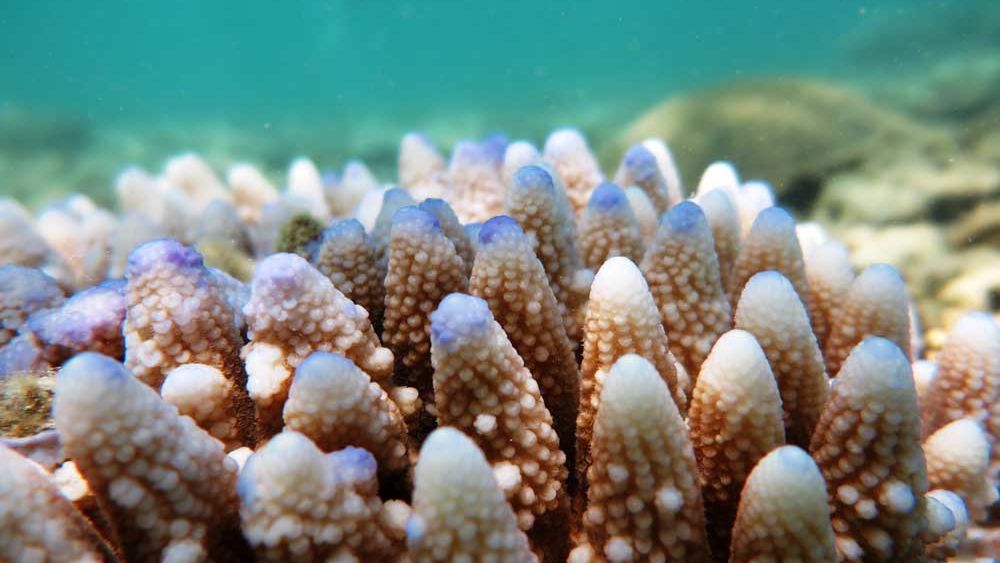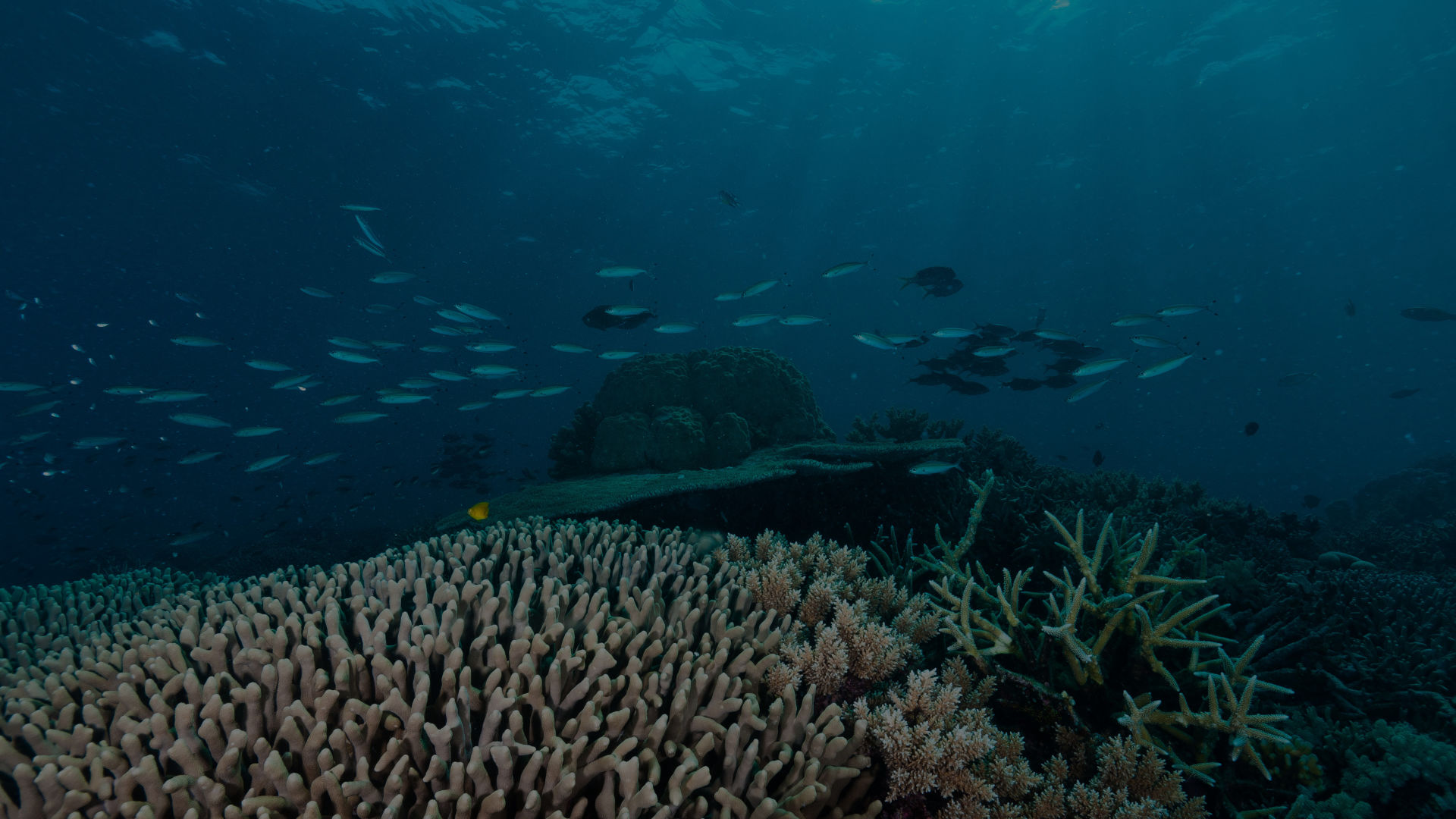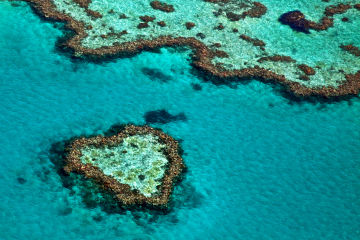News ·
Third large-scale bleaching in five years
Aerial surveys have confirmed scientists’ fears that mass bleaching is occurring on the Great Barrier Reef now, with widespread bleaching caused by heat stress following the hottest February on record since 1900.

The Great Barrier Reef Marine Park Authority today reported a wide variety of bleaching severity – ranging from no bleaching in some areas to the most severe category in others.
This is the third large-scale bleaching of the Great Barrier Reef in five years.
But there is still hope, the Reef remains resilient and it is important to remember that bleached corals are not dead.
The Foundation is heartened to hear that some of the key tourism reefs in the north and central areas are amongst those likely to bounce back from lesser levels of bleaching.
The extent of the bleaching and its severity is still unfolding. When aerial surveys are completed at the end of this week, scientists will then be able to compare the current situation with 2016 and 2017.
Great Barrier Reef Foundation’s Chief Scientist Prof. Peter Mumby gives some insight into the situation:
“Researchers from the ARC Centre of Excellence for Coral Reef Studies and the Great Barrier Reef Authority are currently conducting airborne reconnaissance of the extent of bleaching. As usual it’s patchy but severe in a number of locations including the region between Tully and Townsville.
"Where heating was less severe, such as the outer reefs north of Cairns, the bleaching has been mild to non-existent. I was at Agincourt Reef last weekend and witnessed very limited bleaching.
“Areas that have not yet bleached are unlikely to do so because sea temperatures have begun returning to normal levels for this time of year.
"It is too early to know the level of long-term damage that the bleaching has caused because many corals will recover once thermal stress declines. However, based on what’s happened in the last five years, we would expect to see severe coral mortality in the shallowest regions of the worst affected reefs (i.e., within the first few metres from the surface).
“The pace at which bleaching events are now occurring on the Reef is a matter of huge concern. It clearly highlights the importance of transitioning rapidly to a low carbon economy.
"Reef management also has a vital role to play in helping to reduce additional stressors, such as crown-of-thorns starfish and poor water quality, and promoting rates of coral recovery.
"A number of programs under the Commonwealth-funded Reef Trust Partnership are devoted to this task, including improved control of crown-of-thorns starfish, partnering with farmers in mitigating pollution, exploring the potential for active reef restoration, and designing more targeted means of protecting the reef to increase effectiveness.”

Follow the Great Barrier Reef Marine Park Authority’s weekly Reef health reports to keep updated with current conditions on the Reef.
#Our involvement and response
The Foundation continues to support the critical work of the Great Barrier Reef Marine Park Authority (GBRMPA) and science partners including the Australian Institute of Marine Science (AIMS) in response to the bleaching situation.
With our partners, the Foundation is providing support in the 3 key areas of response, recovery and resilience.
1. First Response
Boosting support for the first responders to coral bleaching so they can better assess the developing situation on the Reef by:
- Helping more rangers, including Indigenous rangers, get into the water to monitor coral health.
- Providing the specialised tools and equipment the rangers and scientists need for accurate surveillance and virtual mapping of Reef conditions including such as underwater drones.
- Enhancing the capabilities of the eReefs Reef-wide monitoring program pioneered by the Foundation with our science partners. eReefs is a vital tool used by first responders including rangers, Reef management, scientists and citizen scientists in monitoring the extent and range of bleaching and includes the Bureau of Meteorology-hosted ReefTemp which tracks ‘degree heating days’ and sea surface temperatures.
2. Recovery Assistance
Helping protect the surviving coral reefs by reducing other stressors to give them the best chance of staying healthy by:
- Controlling crown-of-thorns starfish outbreaks with our support of GBRMPA’s targeted COTS control program.
- Encouraging citizen science initiatives that promote active recovery such as the Magnetic Island program removing smothering algal growth from coral reefs, and promoting new coral growth through local restoration activities like larval reseeding (coral IVF).
3. Resilience
Building the resilience of coral reef ecosystems and helping them adapt to changing conditions by:
- Protecting and restoring critical reef refuges through our Reef Islands Initiative currently active on Lady Elliot Island and the Whitsundays
- Restoring landscapes, reducing erosion and stopping pollutants from reaching the Reef at the source through water quality improvement projects across the Reef catchment
- Accelerating natural reef recovery through innovations such as coral IVF (larval reseeding)
- Developing an innovative toolkit of reef restoration and adaptation science solutions to help build the Reef’s ability to bounce back and recover from the growing combination of manmade and natural threats




